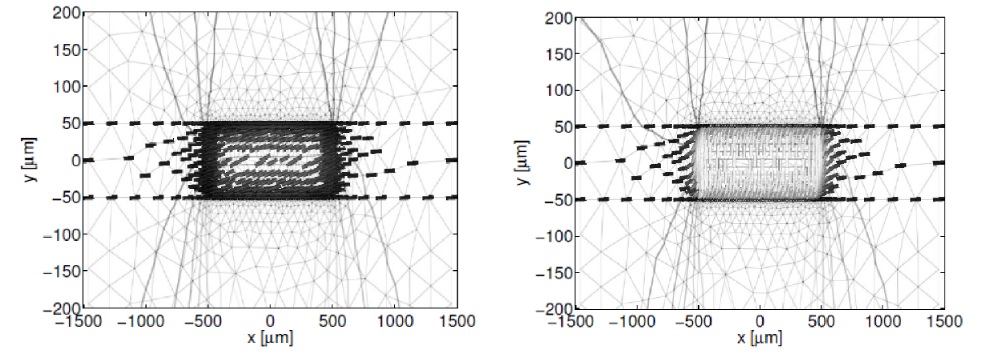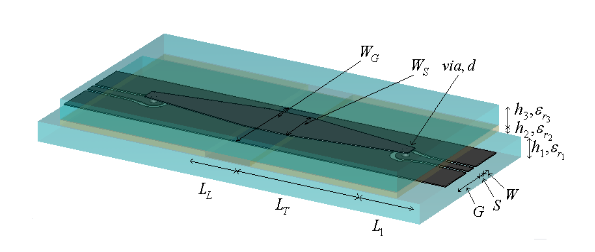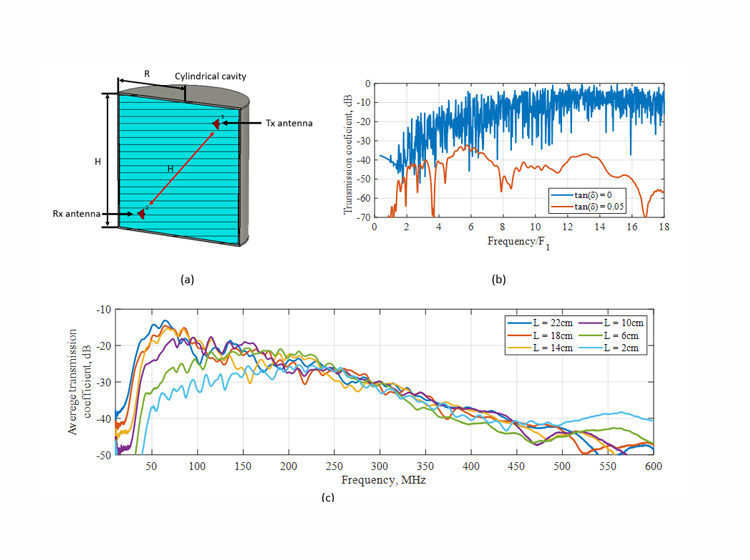The interest in the millimeter-wave band has been renewed recently, driven by the need for short-range high-speed data communications equipment. There is demand for compact and low-cost components, that are mass producible and have low power consumption. It is desirable for these systems to be reconfigurable in order to ensure continuity in data transmission. Nematic Liquid Crystal (LC) materials possess a birefringence that extends into the microwave range. Low voltages can be used to control this birefringence, making these materials an attractive modulation medium in such systems.
Very few LC mixtures have been characterized at milli-meter wave frequencies. The conventional optical methods are very often impractical due to the need for large cell thicknesses, which lead to oversimplification resulting in inaccurate characterisation.
We take a comprehensive approach in modeling both the liquid crystal orientation and the microwave fields, using a Finite Element Method (FEM) approach on a balanced microstrip line, i.e. the case when the width of the ground plane is the same the width of the strip line. Simulation tools have been developed to aid in the characterization of liquid crystalline materials at millimetre-wave frequencies. Firstly, the steady-state liquid crystal orientation is calculated, switched by a low frequency voltage waveform applied to the electrodes. Secondly, the resulting permittivity distribution is passed to a modal solver that is used to calculate the small signal wave propagation in the line at millimetre-wave frequencies. The finite element method has been used to solve the equations involved. The frequency dependence of the effective permittivity has been calculated as the voltage applied to electrodes is altered.




Leave a Reply